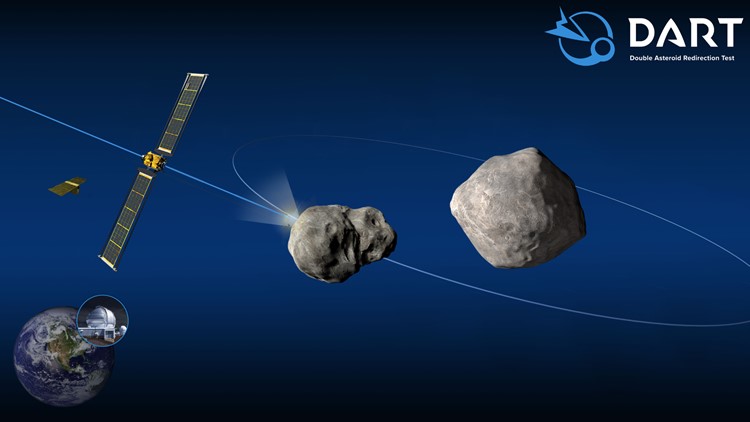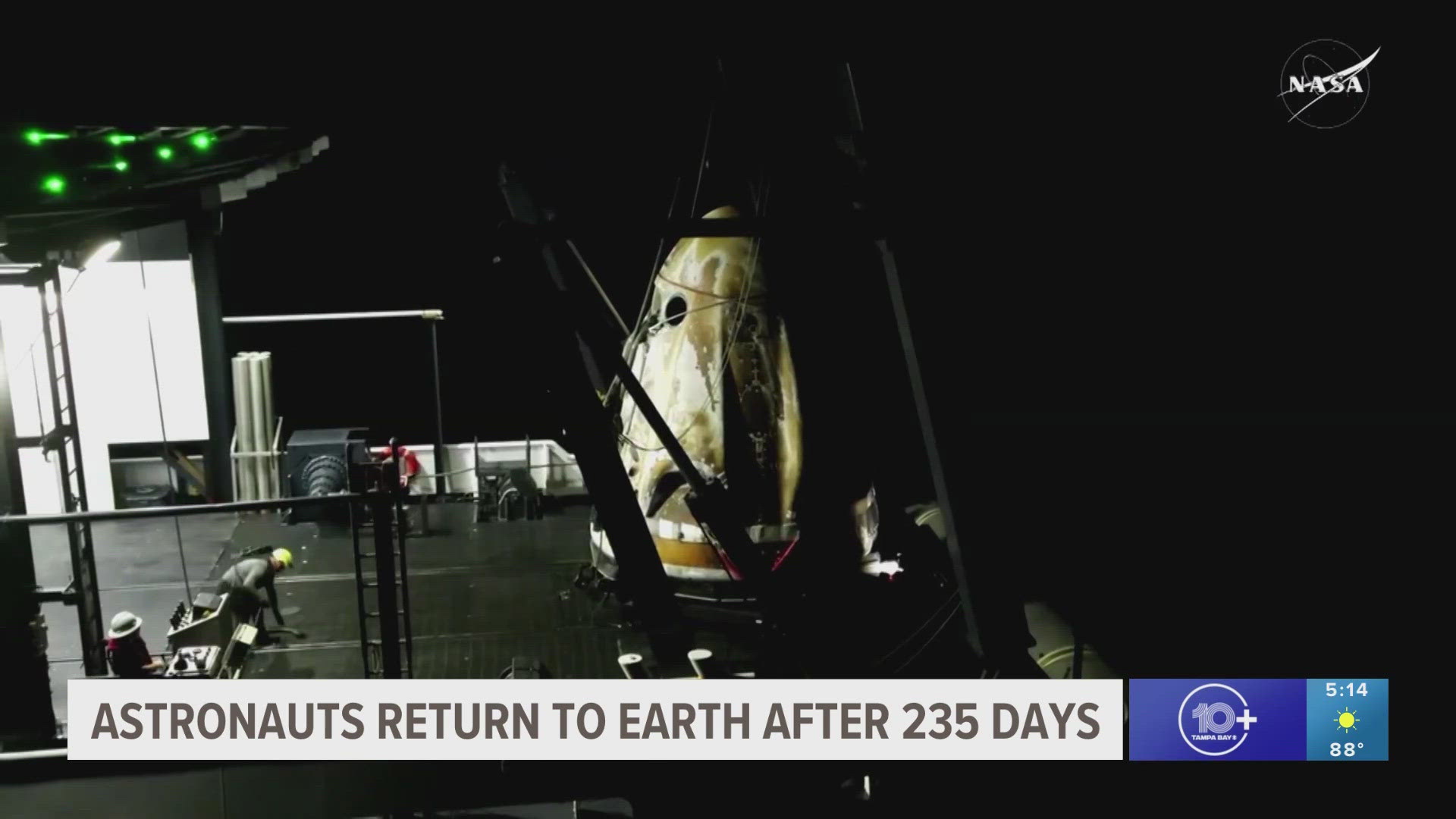VANDENBERG AIR FORCE BASE, Calif. — There's nothing like being prepared. That's why NASA is going to send a spacecraft into the path of a near-Earth asteroid.
Don't worry, the targeted asteroid called Didymos is currently more than 11 million miles away from the planet we call home and is not posing an imminent threat.
But the nation's top space agency doesn't want to wait until an asteroid is a threat before testing out technology that could keep it from barreling toward Earth — sorry, dinosaurs.
DART, aka the Double Asteroid Redirection Test, is a "planetary defense-driven" evaluation of technologies that "could be used to prevent Earth from being hit by a hazardous asteroid in the future."
To do so, the mission will send a high-speed spacecraft into the asteroid's path in hopes of deflecting or steering it away and onto a different trajectory.
According to NASA, Didymos, which measures up to 780 meters in size with a moonlet that reaching 160 meters, is already being tracked through telescopes ahead of DART's arrival
The moonlet is "more typical of the size of asteroids that could pose the most likely significant threat to Earth," the mission's page reads.
But don't expect a quick turnaround time from launch to impact, NASA says it will take over a year of cruising before the spacecraft intercepts the asteroid's moonlet.
NASA is targeting a Nov. 24 launch window from Vanderberg Air Force Base in California. The asteroid-fighting spacecraft will hitch a ride into space aboard SpaceX's Falcon 9 rocket.



